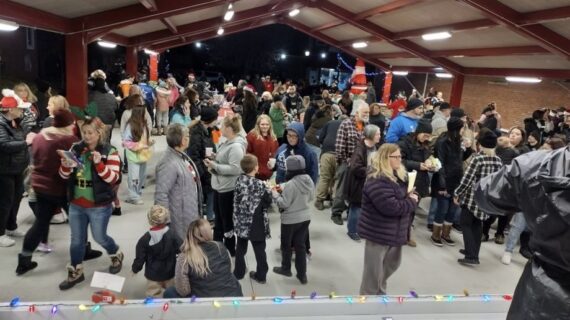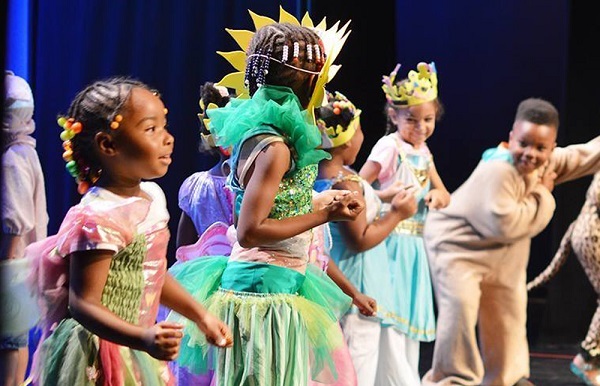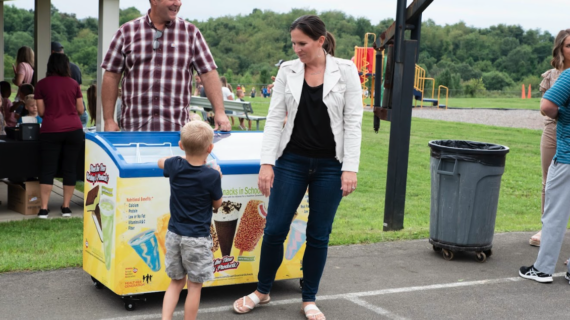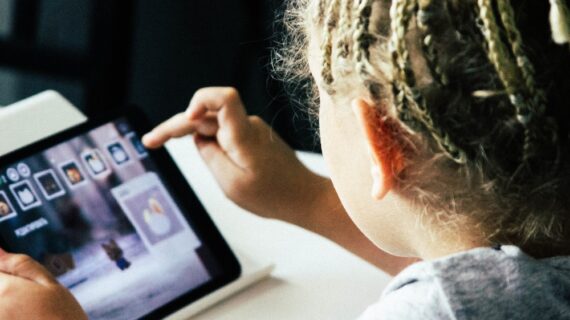
Living up to their name: STEAM Learning at Woodland Hills brings computer knowledge to all
Photos by Ben Filio for Remake Learning.
When Dr. Daniel Castagna became superintendent of Woodland Hills School District in the spring of 2022, he asked his team a question: If the district’s middle school and elementary schools carry the title “STEAM Academy,” are we making sure to give every kid a powerful STEAM learning experience every day?
Tina Dietrich, Woodland Hills’ director of STEAM and innovation, has spent the past two years making sure the answer is yes.
With help from VEX Robotics kits tailored to grade levels from kindergarten through high school, Dietrich and the district’s teachers are exploring everything from the topography of Mars to artistic expression through the lens of computer science – and teaching coding skills along the way.
The robotics program was rolled out last year for students in kindergarten through fifth grade. This year, kids in every grade have robotics every day. Beginning this month, even parents are discovering robotics through an afterschool group for mothers and daughters.
It’s vital, Dietrich says, that computer science isn’t just an elective class for kids on a gifted track with an interest in math and science.
“Computer science has to be done across the board,” she says. “It has to be important.”
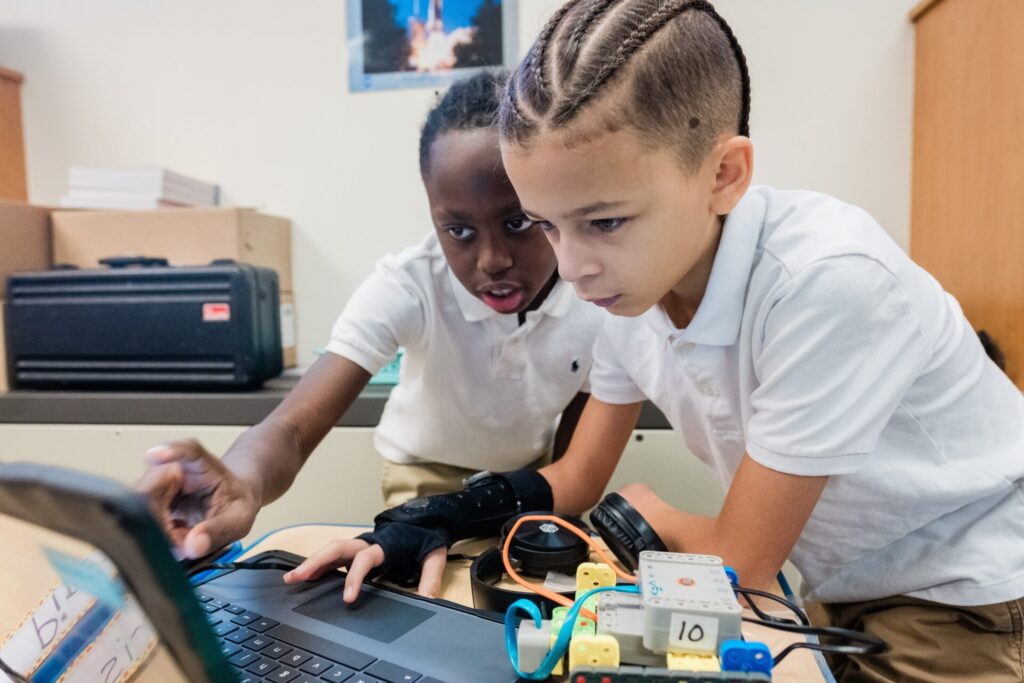
VEX at Every Level
In the days before the December school break, the kids in Bethany Morse’s kindergarten classroom couldn’t think about much besides the holidays. So their teacher channeled that single-mindedness.
They built a Grinch out of VEX pieces that would knock down a pile of presents, she said, and the kids counted how many presents the Grinch knocked down.
Morse’s students are learning that basic push-button coding can cause little VEX robots resembling hockey pucks to follow their instructions. They’re also discovering problem-solving: If I need this robot to follow a certain path, which steps do I need to take to make that happen?
To help her students learn new words, Morse spreads out plastic boards labeled with letters on the classroom carpet. Huddled around these sheets in small groups, the kids send the robot from letter to letter. Working in teams, they slowly build words.
The robots have also helped them learn about sequencing as they analyze the story of “The Polar Express.” Having read the story in class, the students will use VEX boards to drive the robot from the story’s first event to the next.

One December morning in Mrs. Morse’s class, 6-year-old Lily learned to give her robot a series of commands to drive over cartoon images of pieces of coal, which she was “collecting” to put in the Grinch’s stocking.
“We always talk before, so we know what to do,” Lily explained to a visitor as she punched a series of navigational commands into the top of her robot.
Knowing she’d collected 12 pieces the day before, Lily focused on programming in the instructions to reach six more pieces on the board in front of her. Once the robot rolled over the sixth piece, she asked a nearby adult: How many do I have now?
Her face lit up as they counted together, reaching 18. Problem-solving, computer coding and a bit of math – all happening through holiday-themed hands-on learning and leaving a little girl beaming.
Building Skills While Fostering Student Engagement
While Lily was sprawled out on the kindergarten carpet filling the Grinch’s stocking, fourth-grader Kyra was one flight up at Turtle Creek Elementary trying to rescue a tiny plastic astronaut named Joe from a crater on the surface of Mars.
Kyra and her friend Piper are in their second year working with VEX kits, and their skills are already formidable. Kyra uses a laptop to program her Mars Rover vehicle, lining up pre-written blocks of code to flip up solar panels and travel along a carefully mapped path — without colliding with space debris.
“We’ve learned a lot about Mars,” Kyra says. She has enjoyed the science, but her favorite moments during her daily 40-minute robotics class involve journaling and discussing her growing coding skills.
During a day of experimentation, she says, “we want to fail when we’re doing it, because then we’re troubleshooting.”

Last fall, the classes at Turtle Creek created robots for a Thanksgiving parade. The kindergartners carefully decorated latex balloons and attached them to their rolling robots.
But members of Kyra’s fourth-grade class threw themselves into the creative challenge of designing their own parade floats from colorful plastic VEX pieces. Kyra’s team quickly began constructing a parade-worthy robot turkey.
“I had a turkey face and turkey nose and a hat out of all these pieces,” she says. It looked pretty great, but a technological problem soon became clear: The head was so heavy that the turkey toppled over.
Through experimentation, iteration and plenty of teamwork, their turkey eventually made its proud appearance at the parade – and didn’t fall beak-first as it rode along the hallway parade route.
The same problem-solving fascination that kept these fourth-graders engaged ahead of Thanksgiving break has also been making a difference for the special education students at Turtle Creek.
Special education teacher Danielle McCoy says the district’s commitment to STEAM learning has been a game-changer for students with Individualized education plans.
Before STEAM became the school’s top priority, McCoy would use metal cookie sheets and magnetic letters or pieces of play dough in the shape of letters to help kindergarten students who were struggling to learn new words.
The program was always hands-on. “But now we can implement it through robotics and integrate the coding with it. They’re learning skills that they don’t even realize they’re working on, and in a very fun way,” she says. “It’s very engaging for them. They want to learn and want to do well.”
Turtle Creek’s students on the autism spectrum have been benefiting, too.
“Social skills are very important for them,” she says, “and robotics has opened that up for them, because they’re able to form groups that they wouldn’t necessarily have chosen on their own.”
Because the VEX system can be used in different ways by different students, “it offers the differentiation,” she says, but “you’re not singling out those students that maybe struggle. They get the same materials, it looks the same. They just might come to a different outcome or the same outcome just a different way.”
Want to learn more about innovative work happening at local schools? Visit remakelearning.org.
